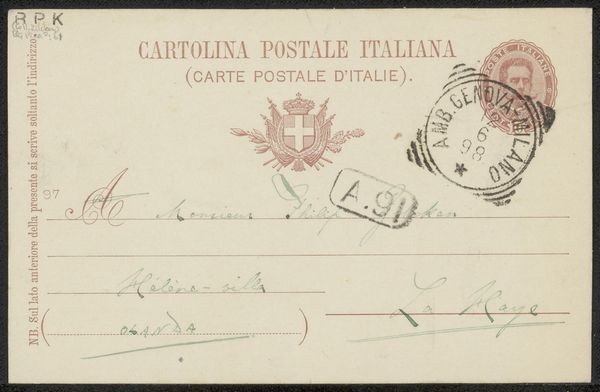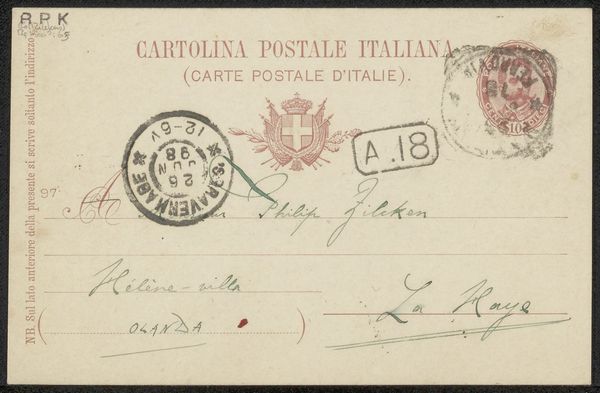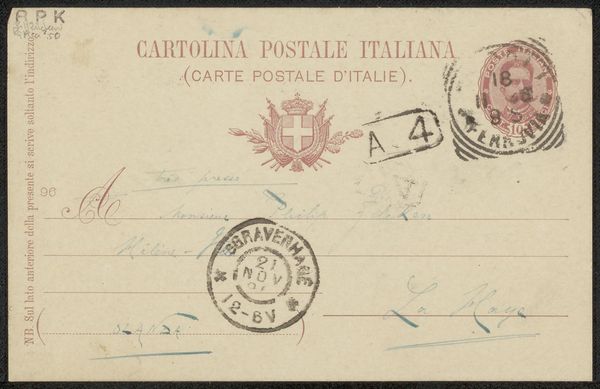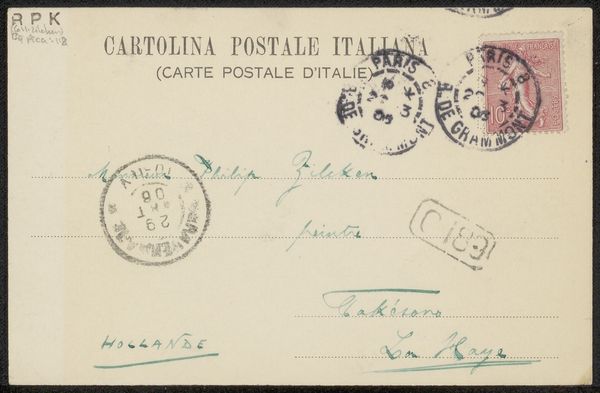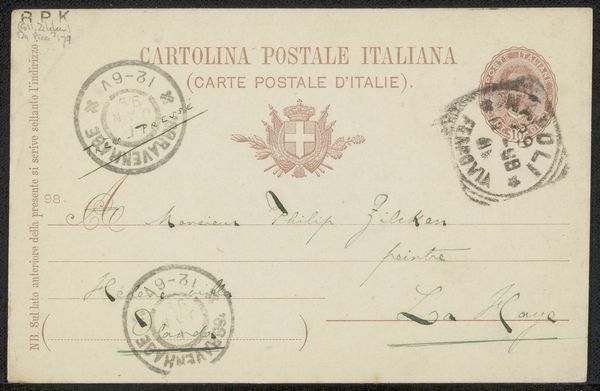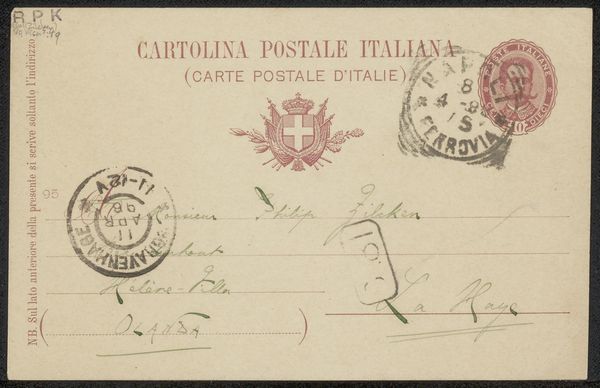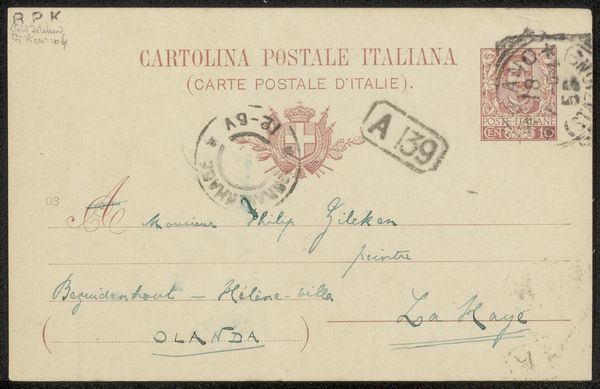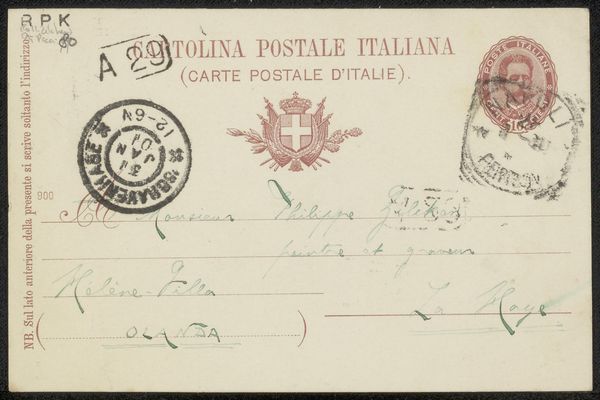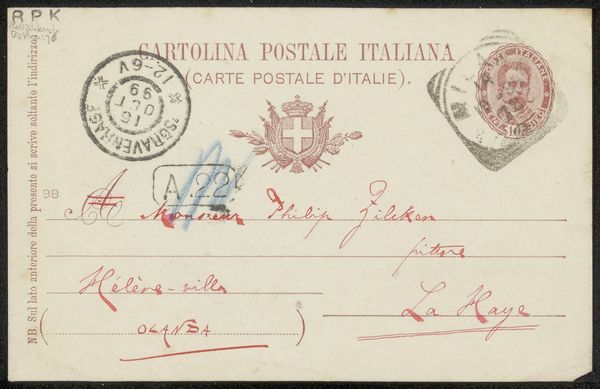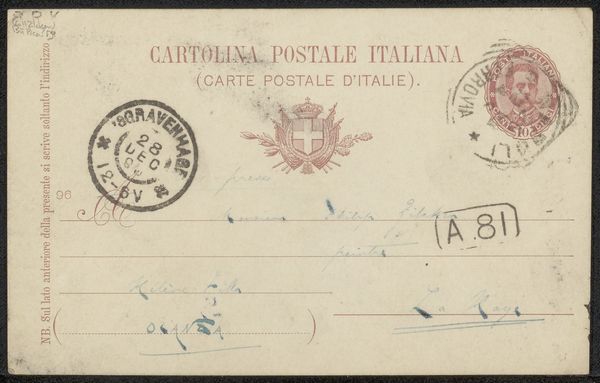
drawing, paper, ink
#
drawing
#
ink drawing
#
pen sketch
#
paper
#
personal sketchbook
#
ink
#
ink drawing experimentation
#
pen-ink sketch
#
pen work
#
sketchbook drawing
#
watercolour illustration
#
storyboard and sketchbook work
#
sketchbook art
#
calligraphy
Copyright: Rijks Museum: Open Domain
Curator: Before us is "Briefkaart aan Philip Zilcken," a drawing possibly from 1918 by Vittorio Pica. It is rendered in ink on paper and seems like an informal piece, a personal correspondence rather than a formal artwork. Editor: My first impression is one of transience. It feels ephemeral, like a whispered secret or a fleeting thought captured on paper, especially with the blurred censor stamps obscuring portions of the text. Curator: The composition is quite revealing. Notice the interplay between the deliberate script of the sender and the imposed marks of censorship. There's a tension created by the superimposition of forms and the contrast between individual expression and institutional control. Semiotically, these marks of censorship function as potent signifiers. Editor: Absolutely, those censorship marks act as a historical palimpsest. Beyond just blocking out certain phrases or names, these overlapping seals create a meta-narrative. You can almost feel the pressure of the time, the suspicion and control that affected even personal communications. Consider how such imagery reverberates even today, whenever personal communication gets monitored. Curator: Indeed. And while the ink calligraphy is expressive, showcasing a fluidity in its execution, it is also spatially confined. It suggests an intention to adhere to formal communicative structures even when imbued with personal sentiment. Look, for example, how the emblem of Turin echoes above the sender's words and reflects an order onto his personal prose. Editor: That emblem underscores the piece's subtle duality. We've got this overt message and address for delivery coexisting with, quite literally, obscured, secretive meanings. A viewer almost feels like an interloper, glimpsing into both the open and the hidden contents of that missive, decoding it for meaning almost a century after it was first created. Curator: Precisely. The drawing provides an aesthetic glimpse into a specific moment in history, framed within constraints of war and control. Ultimately, as a composition, it captures the fragmented nature of memory, distorted by forces beyond the individual. Editor: A fleeting connection frozen in ink. To observe how the personal becomes inevitably enmeshed in public life is precisely the strength this fragile drawing conveys.
Comments
No comments
Be the first to comment and join the conversation on the ultimate creative platform.

